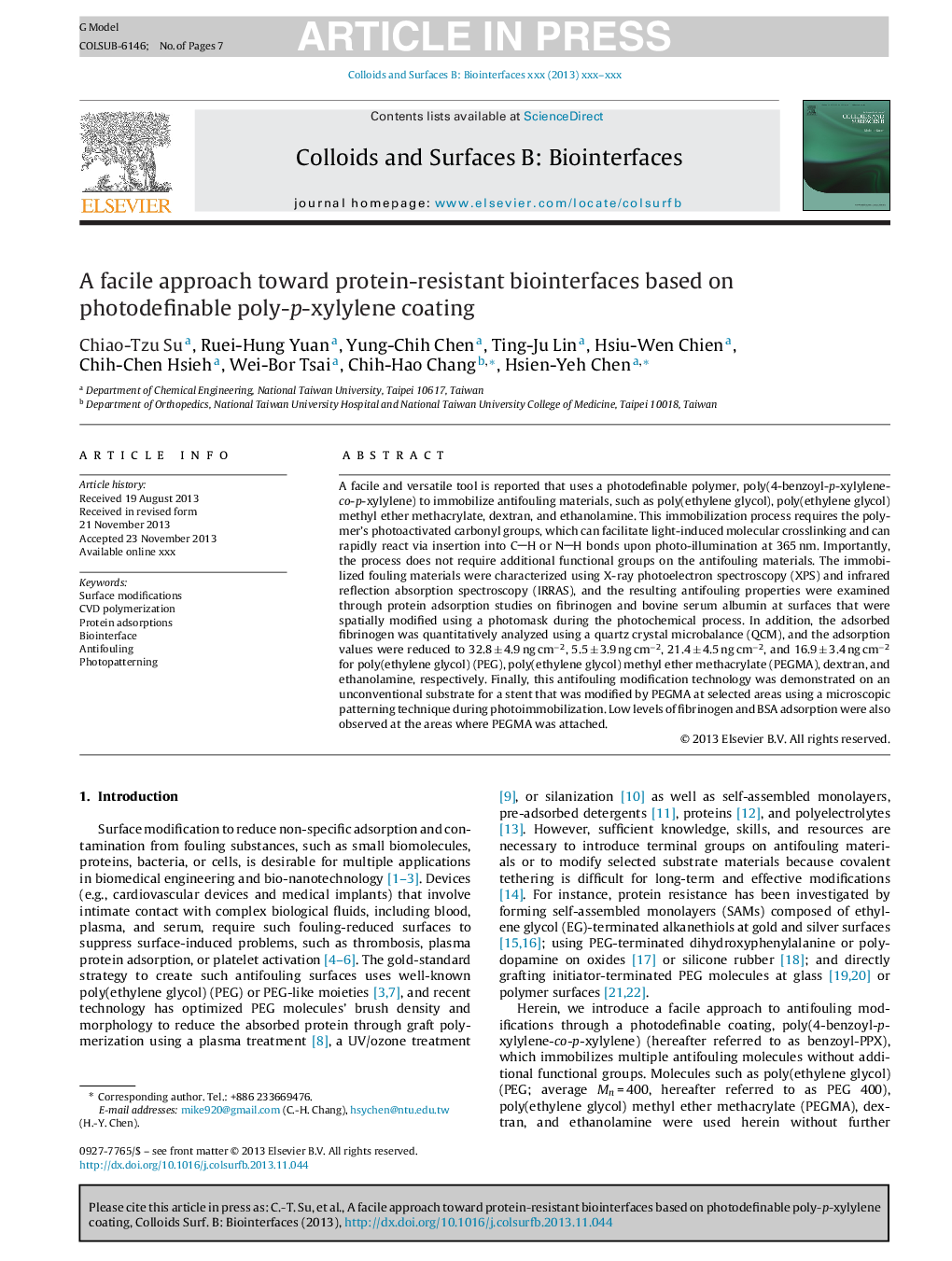| Article ID | Journal | Published Year | Pages | File Type |
|---|---|---|---|---|
| 6983559 | Colloids and Surfaces B: Biointerfaces | 2014 | 7 Pages |
Abstract
A facile and versatile tool is reported that uses a photodefinable polymer, poly(4-benzoyl-p-xylylene-co-p-xylylene) to immobilize antifouling materials, such as poly(ethylene glycol), poly(ethylene glycol) methyl ether methacrylate, dextran, and ethanolamine. This immobilization process requires the polymer's photoactivated carbonyl groups, which can facilitate light-induced molecular crosslinking and can rapidly react via insertion into CH or NH bonds upon photo-illumination at 365 nm. Importantly, the process does not require additional functional groups on the antifouling materials. The immobilized fouling materials were characterized using X-ray photoelectron spectroscopy (XPS) and infrared reflection absorption spectroscopy (IRRAS), and the resulting antifouling properties were examined through protein adsorption studies on fibrinogen and bovine serum albumin at surfaces that were spatially modified using a photomask during the photochemical process. In addition, the adsorbed fibrinogen was quantitatively analyzed using a quartz crystal microbalance (QCM), and the adsorption values were reduced to 32.8 ± 4.9 ng cmâ2, 5.5 ± 3.9 ng cmâ2, 21.4 ± 4.5 ng cmâ2, and 16.9 ± 3.4 ng cmâ2 for poly(ethylene glycol) (PEG), poly(ethylene glycol) methyl ether methacrylate (PEGMA), dextran, and ethanolamine, respectively. Finally, this antifouling modification technology was demonstrated on an unconventional substrate for a stent that was modified by PEGMA at selected areas using a microscopic patterning technique during photoimmobilization. Low levels of fibrinogen and BSA adsorption were also observed at the areas where PEGMA was attached.
Related Topics
Physical Sciences and Engineering
Chemical Engineering
Colloid and Surface Chemistry
Authors
Chiao-Tzu Su, Ruei-Hung Yuan, Yung-Chih Chen, Ting-Ju Lin, Hsiu-Wen Chien, Chih-Chen Hsieh, Wei-Bor Tsai, Chih-Hao Chang, Hsien-Yeh Chen,
